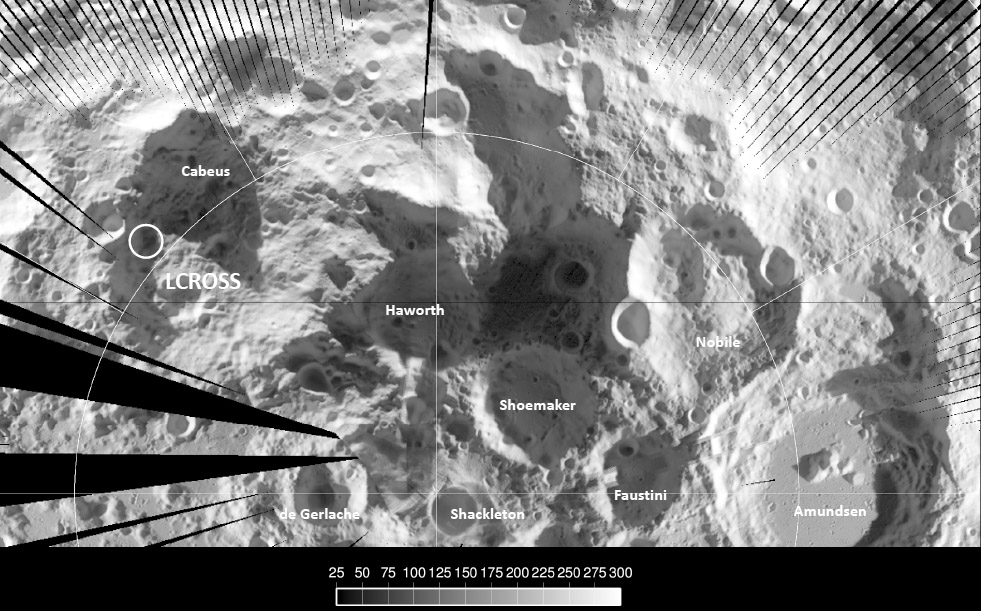Difference between revisions of "April 6, 2011"
(Created page with "__NOTOC__ =Snow At the Pole?= <!-- ws:start:WikiTextHeadingRule:0:<h1> --> <!-- ws:start:WikiTextLocalImageRule:6:<img src="/file/view/LPOD-Dec16-09.jpg/1097...") |
|||
| Line 4: | Line 4: | ||
<!-- ws:start:WikiTextHeadingRule:0:<h1> --> | <!-- ws:start:WikiTextHeadingRule:0:<h1> --> | ||
<!-- ws:start:WikiTextLocalImageRule:6:<img src="/file/view/LPOD-Dec16-09.jpg/109788193/LPOD-Dec16-09.jpg" alt="" title="" style="width: 950px;" /> -->[[File:LPOD-Dec16-09.jpg|LPOD-Dec16-09.jpg]]<!-- ws:end:WikiTextLocalImageRule:6 --><br /> | <!-- ws:start:WikiTextLocalImageRule:6:<img src="/file/view/LPOD-Dec16-09.jpg/109788193/LPOD-Dec16-09.jpg" alt="" title="" style="width: 950px;" /> -->[[File:LPOD-Dec16-09.jpg|LPOD-Dec16-09.jpg]]<!-- ws:end:WikiTextLocalImageRule:6 --><br /> | ||
| − | <em>image from AGU presentation by [mailto:tychocrater@yahoo.com Chuck Wood]</em><br /> | + | <em>image from AGU presentation by [http://www.nasa.gov/pdf/412260main_LRO_AGU_09_forweb.pdf David Paige], NASA/UCLA (temperatures in K)</em><br /> |
| + | <br /> | ||
| + | It is rare that snow is observed at the lunar south pole, and despite the way it looks, this isn't snow. The Lunar Reconnaissance Orbiter now circling the Moon carries an instrument called Diviner that images in the infrared. The signal detected is far in the IR, apparently from 50 to 100 microns. I say apparently because the caption for this image says it was obtained with the <em>Band 8</em> filter, but the [http://www.diviner.ucla.edu/overview.html website] doesn't number them that way. The press-release science discovery is that the permanently shadowed crater floors are colder (-238 C) than anticipated, but these images that see in the dark also provide topographic details that are otherwise invisible. Compare with the Clementine [http://www.lpod.org/?m=20061021 mosaic] (upside down compared to the view above) to see how much of the previously hidden surface is not visible. Typically only the edges of crater rims are illuminated by sunlight - for example, the bright rim arc of Shoemaker - so it is now possible to characterise the interiors and exteriors of these polar craters, especially when using the high resolution [http://www.diviner.ucla.edu/gallery/south_pole_summer_noon.jpg version] of the image. I haven't done a detailed survey but there is nothing on the crater floors that looks unusual - if there is ice here - and LCROSS proved there is - then it doesn't show up as glaciers (no one thought it would!) or other unusual morphologies. But with higher resolution it might be possible to see some peculiarities due to vaporization of ice by small impacts. <br /> | ||
| + | <br /> | ||
| + | <em>[mailto:tychocrater@yahoo.com Chuck Wood]</em><br /> | ||
Busy preparing a talk about Titan for the Cleveland Astronomical Society for Thursday evening and don't have time for a brand new LPOD, so this is a classic from Dec 16, 2009.<br /> | Busy preparing a talk about Titan for the Cleveland Astronomical Society for Thursday evening and don't have time for a brand new LPOD, so this is a classic from Dec 16, 2009.<br /> | ||
<br /> | <br /> | ||
Revision as of 21:40, 1 January 2015
Snow At the Pole?
image from AGU presentation by David Paige, NASA/UCLA (temperatures in K)
It is rare that snow is observed at the lunar south pole, and despite the way it looks, this isn't snow. The Lunar Reconnaissance Orbiter now circling the Moon carries an instrument called Diviner that images in the infrared. The signal detected is far in the IR, apparently from 50 to 100 microns. I say apparently because the caption for this image says it was obtained with the Band 8 filter, but the website doesn't number them that way. The press-release science discovery is that the permanently shadowed crater floors are colder (-238 C) than anticipated, but these images that see in the dark also provide topographic details that are otherwise invisible. Compare with the Clementine mosaic (upside down compared to the view above) to see how much of the previously hidden surface is not visible. Typically only the edges of crater rims are illuminated by sunlight - for example, the bright rim arc of Shoemaker - so it is now possible to characterise the interiors and exteriors of these polar craters, especially when using the high resolution version of the image. I haven't done a detailed survey but there is nothing on the crater floors that looks unusual - if there is ice here - and LCROSS proved there is - then it doesn't show up as glaciers (no one thought it would!) or other unusual morphologies. But with higher resolution it might be possible to see some peculiarities due to vaporization of ice by small impacts.
Chuck Wood
Busy preparing a talk about Titan for the Cleveland Astronomical Society for Thursday evening and don't have time for a brand new LPOD, so this is a classic from Dec 16, 2009.
Related Links
Rükl plate 73
COMMENTS?
Click on this icon File:PostIcon.jpg at the upper right to post a comment.




